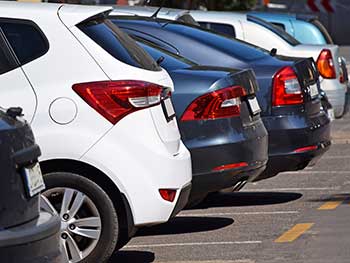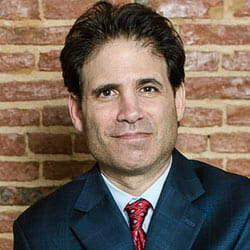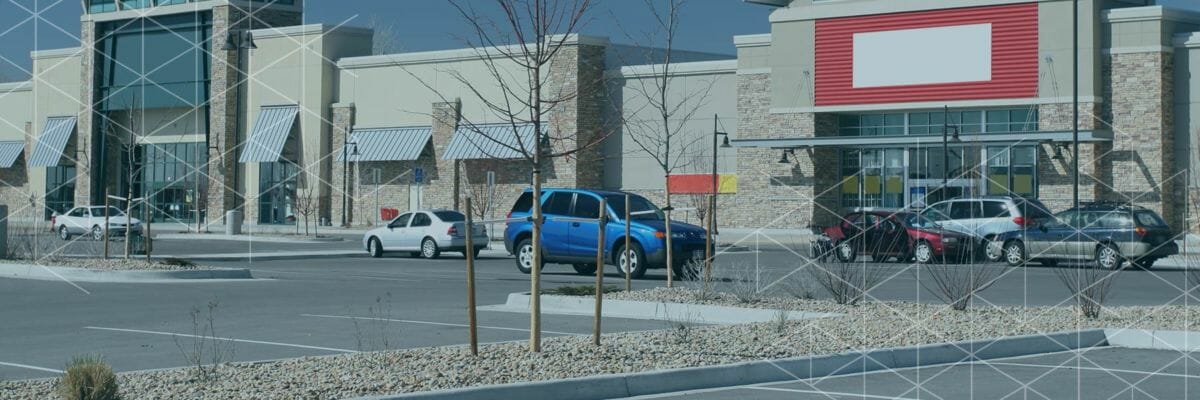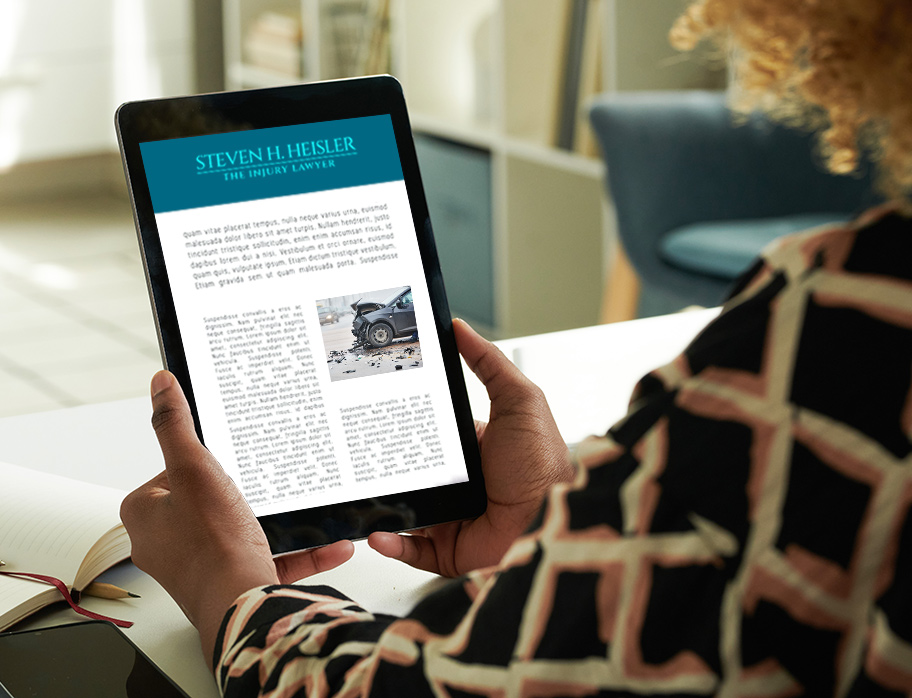Not Just Scratch and Dent: Parking Lot Crashes
 If you’ve ever had to brake suddenly or jump out of the way of an onrushing car, you know that parking lot accidents are more common than many might think. Some organizations, such as the Independent Insurance Agents and Brokers Association, believe that a full 20 percent of all automobile crashes occur in parking lots. And that figure does not include scratches, dents, and nicks that most people don’t bother to report. About 1 in 7 insurance claims—14 percent—involve parking lots.
If you’ve ever had to brake suddenly or jump out of the way of an onrushing car, you know that parking lot accidents are more common than many might think. Some organizations, such as the Independent Insurance Agents and Brokers Association, believe that a full 20 percent of all automobile crashes occur in parking lots. And that figure does not include scratches, dents, and nicks that most people don’t bother to report. About 1 in 7 insurance claims—14 percent—involve parking lots.
Many crashes happen at low speeds, but even a “slow” accident can mean higher insurance premiums and costly repairs. Parking lot accidents can even mean serious injury or death to drivers, passengers, and pedestrians. Even though some crashes occur between two moving vehicles, many pedestrian accidents happen while a motorist is backing out of a space or driving forward at excessive speed.
How Do Such Accidents Happen?
Parking lot or parking garage crashes can occur because a driver is rushing to “grab” a valuable space, such as near an entrance—or is perhaps trying to get home on time for a child whose school has let out. Speed is definitely a factor in some crashes. The faster a driver is going, the more time it’s going to take for the vehicle to stop once the driver hits the brakes. In tight, sometimes confusing spaces, drivers can underestimate how long it will take them to stop.
Almost any accident can be avoided if the vehicle is moving slowly enough. But, when a driver is backing out of a space, those who are traveling at what could be considered an unreasonable speed can appear too quickly to be seen, causing a crash. If the driver is pulling forward through a space into a traffic lane, again, an oncoming car moving too quickly can mean an accident.
Blind zones also come into play. According to Consumer Reports, for the average driver in a mid-sized SUV, the area behind the vehicle that cannot be seen when a small child is there is about 18 feet. For a shorter-than-average driver, the zone is 28 feet. The larger the vehicle, or the shorter the driver, the bigger the blind zone is behind the vehicle. As larger vehicles have become more popular, blind zones—and their dangers—have increased. In a tragic accident during April, 2015 in nearby Philadelphia, a tow truck backed over a Philadelphia Parking Authority employee in a South Philadelphia parking lot. And just one year earlier at the Merriweather Post Pavilion in Columbia, MD, a Baltimore man who was run over in the Pavilion’s parking lot died. If you’ve been injured in an accident involving any type of large vehicle, including a tow truck, in Maryland, consulting a Baltimore truck accident lawyer familiar with these cases can help you understand your legal options and seek compensation for your losses.
Between 2008 and 2011, in non-traffic areas, an average of 232 people were killed by backing vehicles, according to the NHTSA. The total number of pedestrian fatalities caused by backing vehicles during the four years was 926 persons, with approximately 52,000 injured.
Right-of-Way Issues
Crashes can also occur because it can be confusing as to who has the right of way in a parking lot. In some cases, as in the situation where two cars back out of their spaces and into each other, no one may have the right of way.
Parking lots are configured with two kinds of lanes, feeder lanes and thoroughfares. A thoroughfare exits to a street, and can be thought of as a main road in a parking lot. Feeder lanes are smaller, beginning and ending at thoroughfares. If you are driving on the thoroughfare, you have the right of way over drivers emerging from the feeder lanes. If you are in a feeder lane, you are supposed to stop and let the thoroughfare traffic proceed, not entering the flow of traffic until the thoroughfare is clear.
If you are in a parking space and attempting to either back out or pull forward into a lane, you must yield the right of way, just as if you were backing or pulling out of your own driveway. Those in the road always have the right of way.
Stop, yield, speed limit, and other traffic signs are the same in parking lots as they are on any other kind of road, and must be obeyed.
How Can I Avoid Parking Lot Accidents?
We have a number of tips to help you avoid becoming a victim in a parking lot crash:
- Around 25 percent of crashes in parking lots occur because of vehicles backing up. Whether in your car or on foot, keep a sharp eye out for cars backing into you.
- Comply with all road signs, including speed limits. Do not speed or drive recklessly.
- Park farther away from your destination if you are able, to avoid congestion and the greater chance of a crash.
- Always wear your seat belt. Even though you are moving slowly, your belt can help keep you from serious harm.
- You can’t necessarily trust your mirrors. Be mindful of blind zones.
- At night, park in well-lit areas. Not only will you be able to see pedestrians and other drivers better, your personal safety will be increased as well.
If you are a pedestrian, practice “defensive walking” as you would defensive driving:
- Be extremely vigilant when it comes to cars moving toward you or backing out.
- Use marked crosswalks and do not text or otherwise distract yourself while walking in a parking lot or garage.
- Take extra care at night, as it can be hard for drivers to see you, especially if you are wearing dark clothing.
- Remember that large vehicles have large blind zones, and remain alert around them.
- If you see brake lights, a puff of exhaust smoke, or hear a car door slam, be prepared for the vehicle to move out of its parking space toward you.
Many times, parking lot crashes boil down to simple human error and negligence. After you take care of the injured, snap photos, and obtain the other driver’s information, you may find you need legal assistance.
We’re listening. How can we help?
At the Law Offices of Steven H. Heisler, we have devoted our practice to defending the rights of personal injury victims. We know how traumatic a serious car accident can be for both the injured person and for his or her family. If you or a loved one was seriously injured in any kind of vehicular accident, you may be entitled to various kinds of financial compensation, such as medical bills, lost wages, and pain and suffering. Keep in mind, however, that there is a statute of limitations – or a time limit – for filing personal injury claims. If you have been injured in an accident, you should not delay. Contact Steve today for a free initial consultation by calling (410) 625-4878, or use our online form.

Attorney Steve Heisler
Steve Heisler decided in 1996 that he was going to focus his law practice exclusively on injury cases. Since then, he has been representing injured people against insurance companies, disreputable medical practitioners and Big Pharma, and doing it with compassion, honesty and level-headed rationality. [ Attorney Bio ]


